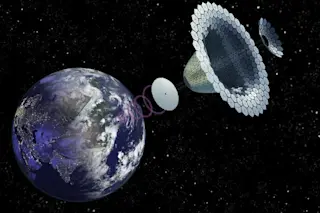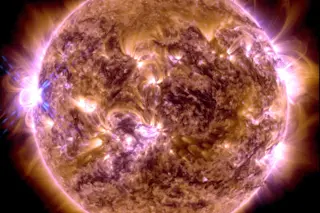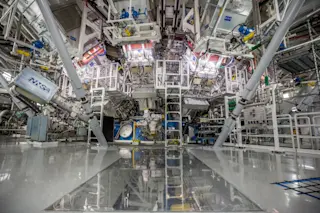Nowhere on Earth does the sun shine as brightly as it does in geosynchronous orbit, that parking space 22,236 miles up where a satellite can keep a spot on Earth in steady view all day, every day.
Placed high above the gauzy atmosphere, solar panels can intercept rays 35 to 70 percent more intense than midday sunlight on the ground. In high orbit, there is no cloud cover, no twilight, no wan winter sun. And a cleverly designed and positioned solar satellite can avoid the shadow of night for all but 44 hours a year, so there is no need to store energy to keep the electrons flowing almost continuously.
All told, an advanced photovoltaic cell in space can deliver up to 40 times the annual amount of reliable 24/7 energy that the same cell would generate on the ground. It’s not solar power so much as it is stellar ...














